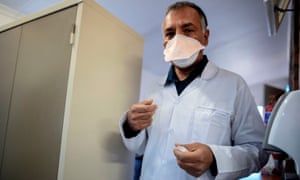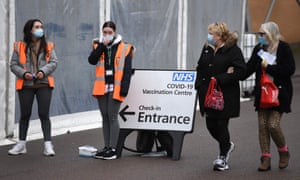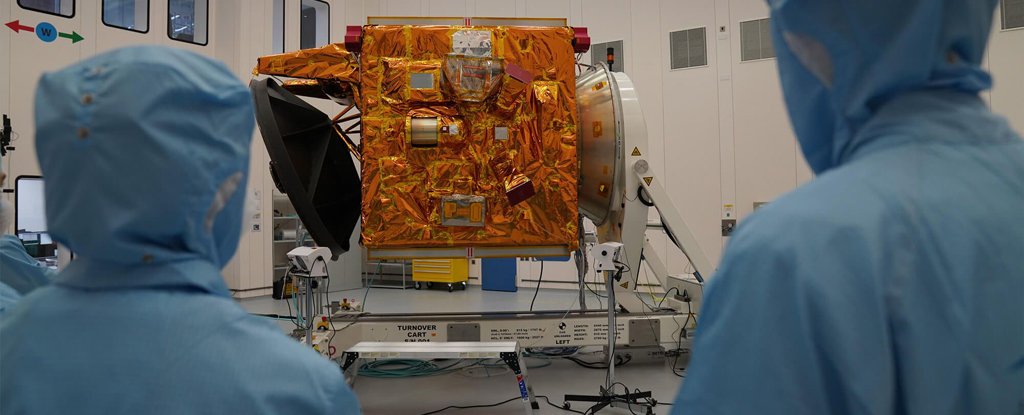The bad news, coming nearly a week after a million doses of the AstraZeneca-Oxford vaccine arrived in South Africa, was a big setback for the country.

Trucks carrying AstraZeneca’s vaccine through Johannesburg last week.
Credit...Phill Magakoe/Agence France-Presse — Getty Images
By Benjamin Mueller, Rebecca Robbins and Lynsey Chutel
Feb. 7, 2021 NEW YORK TIMES
South Africa halted use of the AstraZeneca-Oxford coronavirus vaccine on Sunday after evidence emerged that the vaccine did not protect clinical trial volunteers from mild or moderate illness caused by the more contagious virus variant that was first seen there.
The findings were a devastating blow to the country’s efforts to combat the pandemic.
Scientists in South Africa said on Sunday that a similar problem held for people who had been infected by earlier versions of the coronavirus: The immunity they acquired naturally did not appear to protect them from mild or moderate cases when they were reinfected by the variant, known as B.1.351.
The developments, coming nearly a week after a million doses of the AstraZeneca-Oxford vaccine arrived in South Africa, were an enormous setback for the country, where more than 46,000 people are known to have died from the virus.
They were also another sign of the dangers posed by new mutations in the coronavirus. The B.1.351 variant has spread to at least 32 countries, including the United States.
The number of cases evaluated as part of the studies outlined by South African scientists on Sunday were low, making it difficult to pinpoint just how effective or not the vaccine might be against the variant.
And because the clinical trial participants who were evaluated were relatively young and unlikely to become severely ill, it was impossible for the scientists to determine if the variant interfered with the AstraZeneca-Oxford vaccine’s ability to protect against severe Covid-19, hospitalizations or deaths.
The scientists said, however, that they believed the vaccine might protect against more severe cases, based on the immune responses detected in blood samples from people who were given it. If further studies show that to be the case, South African health officials will consider resuming use of the AstraZeneca-Oxford vaccine, they said.
By Benjamin Mueller, Rebecca Robbins and Lynsey Chutel
Feb. 7, 2021 NEW YORK TIMES
South Africa halted use of the AstraZeneca-Oxford coronavirus vaccine on Sunday after evidence emerged that the vaccine did not protect clinical trial volunteers from mild or moderate illness caused by the more contagious virus variant that was first seen there.
The findings were a devastating blow to the country’s efforts to combat the pandemic.
Scientists in South Africa said on Sunday that a similar problem held for people who had been infected by earlier versions of the coronavirus: The immunity they acquired naturally did not appear to protect them from mild or moderate cases when they were reinfected by the variant, known as B.1.351.
The developments, coming nearly a week after a million doses of the AstraZeneca-Oxford vaccine arrived in South Africa, were an enormous setback for the country, where more than 46,000 people are known to have died from the virus.
They were also another sign of the dangers posed by new mutations in the coronavirus. The B.1.351 variant has spread to at least 32 countries, including the United States.
The number of cases evaluated as part of the studies outlined by South African scientists on Sunday were low, making it difficult to pinpoint just how effective or not the vaccine might be against the variant.
And because the clinical trial participants who were evaluated were relatively young and unlikely to become severely ill, it was impossible for the scientists to determine if the variant interfered with the AstraZeneca-Oxford vaccine’s ability to protect against severe Covid-19, hospitalizations or deaths.
The scientists said, however, that they believed the vaccine might protect against more severe cases, based on the immune responses detected in blood samples from people who were given it. If further studies show that to be the case, South African health officials will consider resuming use of the AstraZeneca-Oxford vaccine, they said.
Volunteers for coronavirus vaccine trials in Soweto, South Africa.

Credit...Jerome Delay/Associated Press
The new research findings have not been published in a scientific journal. But the discovery that the AstraZeneca-Oxford product showed minimal efficacy in preventing mild and moderate cases of the new variant added to the mounting evidence that B.1.351 makes current vaccines less effective.
Pfizer and Moderna have both said that preliminary laboratory studies indicate that their vaccines, while still protective, are less effective against B.1.351. Novavax and Johnson & Johnson have also sequenced test samples from their clinical trial participants in South Africa, where B.1.351 caused the vast majority of cases, and both reported lower efficacy there than in the United States.
“These results are very much a reality check,” Shabir Madhi, a virologist at University of the Witwatersrand who ran the AstraZeneca-Oxford vaccine trial in South Africa, said of the findings released on Sunday.
The pause in the country’s rollout of the AstraZeneca-Oxford vaccine means that the first shipments will now be put in warehouses.
Instead, South African health officials said they would inoculate health workers in the coming weeks with the Johnson & Johnson vaccine, which has shown strong efficacy in preventing severe cases and hospitalizations caused by the new variant.
Johnson & Johnson has applied for an emergency use authorization in South Africa. But health officials there indicated that even before it is authorized, some health workers could be given the vaccine as part of an ongoing trial.
In the AstraZeneca-Oxford trial in South Africa, roughly 2,000 participants were given either two doses of the vaccine or placebo shots.
There was virtually no difference in the numbers of people in the vaccine and placebo groups who were infected with B.1.351, suggesting that the vaccine did little to protect against the new variant. Nineteen of the 748 people in the group that was given the vaccine were infected with the new variant, compared with 20 out of 714 people in the group that was given a placebo.
 Unloading cases of vaccines in Johannesburg last week.
Unloading cases of vaccines in Johannesburg last week.
The new research findings have not been published in a scientific journal. But the discovery that the AstraZeneca-Oxford product showed minimal efficacy in preventing mild and moderate cases of the new variant added to the mounting evidence that B.1.351 makes current vaccines less effective.
Pfizer and Moderna have both said that preliminary laboratory studies indicate that their vaccines, while still protective, are less effective against B.1.351. Novavax and Johnson & Johnson have also sequenced test samples from their clinical trial participants in South Africa, where B.1.351 caused the vast majority of cases, and both reported lower efficacy there than in the United States.
“These results are very much a reality check,” Shabir Madhi, a virologist at University of the Witwatersrand who ran the AstraZeneca-Oxford vaccine trial in South Africa, said of the findings released on Sunday.
The pause in the country’s rollout of the AstraZeneca-Oxford vaccine means that the first shipments will now be put in warehouses.
Instead, South African health officials said they would inoculate health workers in the coming weeks with the Johnson & Johnson vaccine, which has shown strong efficacy in preventing severe cases and hospitalizations caused by the new variant.
Johnson & Johnson has applied for an emergency use authorization in South Africa. But health officials there indicated that even before it is authorized, some health workers could be given the vaccine as part of an ongoing trial.
In the AstraZeneca-Oxford trial in South Africa, roughly 2,000 participants were given either two doses of the vaccine or placebo shots.
There was virtually no difference in the numbers of people in the vaccine and placebo groups who were infected with B.1.351, suggesting that the vaccine did little to protect against the new variant. Nineteen of the 748 people in the group that was given the vaccine were infected with the new variant, compared with 20 out of 714 people in the group that was given a placebo.
 Unloading cases of vaccines in Johannesburg last week.
Unloading cases of vaccines in Johannesburg last week.Credit...Elmond Jiyane For Gcis/Via Reuters
That equates to a vaccine efficacy of 10 percent, though the scientists did not have enough statistical confidence to know for sure whether that figure would hold among more people.
Researchers also conducted laboratory experiments on blood samples from people who had been vaccinated and found a significant reduction in the activity levels of vaccine-generated antibodies against the B.1.351 variant compared with other lineages.
Beyond the troubling news about the AstraZeneca-Oxford vaccine, Dr. Madhi reported evidence suggesting that past infection by earlier versions of the coronavirus did not protect people in South Africa from the B.1.351 variant.
In order to determine who had previously been infected by the coronavirus, researchers tested blood samples from people who had enrolled in a trial of the Novavax vaccine, but who were given placebo shots and not the vaccine itself.
Covid-19 Vaccines ›
What You Need to Know About the Vaccine Rollout
Providers in the U.S. are administering about 1.3 million doses of Covid-19 vaccines per day, on average. Almost 30 million people have received at least one dose, and about 7 million have been fully vaccinated. How many people have been vaccinated in your state?
That equates to a vaccine efficacy of 10 percent, though the scientists did not have enough statistical confidence to know for sure whether that figure would hold among more people.
Researchers also conducted laboratory experiments on blood samples from people who had been vaccinated and found a significant reduction in the activity levels of vaccine-generated antibodies against the B.1.351 variant compared with other lineages.
Beyond the troubling news about the AstraZeneca-Oxford vaccine, Dr. Madhi reported evidence suggesting that past infection by earlier versions of the coronavirus did not protect people in South Africa from the B.1.351 variant.
In order to determine who had previously been infected by the coronavirus, researchers tested blood samples from people who had enrolled in a trial of the Novavax vaccine, but who were given placebo shots and not the vaccine itself.
Covid-19 Vaccines ›
What You Need to Know About the Vaccine Rollout
Providers in the U.S. are administering about 1.3 million doses of Covid-19 vaccines per day, on average. Almost 30 million people have received at least one dose, and about 7 million have been fully vaccinated. How many people have been vaccinated in your state?
The U.S. is far behind several other countries in getting its population vaccinated.
In the near future, travel may require digital documentation showing that passengers have been vaccinated or tested for the coronavirus.
When can you get the vaccine? What are the vaccine’s side effects? Is it safe to take during pregnancy? We’ve have answers to many of your questions.
The researchers compared the levels of infection by the new variant in people who showed evidence of having previously had Covid-19 with the levels of infection in people who did not, and found no difference.
That suggested, Dr. Madhi wrote on a slide presented Sunday night, that “past infection by ‘original’ variants of SARS-CoV-2 do NOT protect against mild and moderate Covid-19 from the B.1.351 variant.”
He said it was possible that the potential of the B.1.351 variant to evade immune responses in people who had previously been infected accounted at least in part for why South Africa has suffered such a devastating second wave of the virus in recent months.
Researchers from the University of Oxford acknowledged on Sunday that the vaccine provided “minimal protection” against mild or moderate cases involving the B.1.351 variant. They are working to produce a new version of the vaccine that can protect against the most dangerous mutations of the B.1.351 variant, and have said they hope it will be ready by the fall.
“This study confirms that the pandemic coronavirus will find ways to continue to spread in vaccinated populations, as expected,” Andrew Pollard, the chief investigator on the Oxford vaccine trial, said in a statement. “But, taken with the promising results from other studies in South Africa using a similar viral vector, vaccines may continue to ease the toll on health care systems by preventing severe disease.”

Novavax said its vaccine was just under 50 percent effective in
preventing Covid-19 in its South Africa trial.
Credit...Alastair Grant/Associated Press
Moderna has also begun developing a new form of its vaccine that could be used as a booster shot against the variant in South Africa.
B.1.351 has become the dominant form of the virus in South Africa and has been found in several dozen countries. A small number of cases have been reported in South Carolina, Maryland and Virginia.
Scientists believe that B.1.351 may be more adept at dodging protective vaccine-generated antibodies because it has acquired a mutation, known as E484K, that makes it harder for antibodies to grab onto the virus and prevent it from entering cells.
Novavax said its vaccine was just under 50 percent effective in preventing Covid-19 in its South Africa trial. Johnson & Johnson reported that its single-shot vaccine was 57 percent effective in preventing moderate to severe Covid-19 in South Africa, though it still offered complete protection against hospitalization and death after four weeks.
Another fast-spreading variant of the virus, known as B.1.1.7 and first identified in Britain, does not appear to interfere with vaccines. All five of the leading vaccines, and most recently AstraZeneca’s product, have been found to offer similar levels of protection against B.1.1.7 compared to earlier lineages of the virus.
AstraZeneca’s vaccine has been authorized by around 50 countries, including Britain, which has found dozens of cases of the variant first seen in South Africa.
In the United States, regulators are waiting on data from a large, late-stage clinical trial of the AstraZeneca-Oxford vaccine that is expected to report results in March.
The AstraZeneca-Oxford Vaccine and New Variants
Moderna has also begun developing a new form of its vaccine that could be used as a booster shot against the variant in South Africa.
B.1.351 has become the dominant form of the virus in South Africa and has been found in several dozen countries. A small number of cases have been reported in South Carolina, Maryland and Virginia.
Scientists believe that B.1.351 may be more adept at dodging protective vaccine-generated antibodies because it has acquired a mutation, known as E484K, that makes it harder for antibodies to grab onto the virus and prevent it from entering cells.
Novavax said its vaccine was just under 50 percent effective in preventing Covid-19 in its South Africa trial. Johnson & Johnson reported that its single-shot vaccine was 57 percent effective in preventing moderate to severe Covid-19 in South Africa, though it still offered complete protection against hospitalization and death after four weeks.
Another fast-spreading variant of the virus, known as B.1.1.7 and first identified in Britain, does not appear to interfere with vaccines. All five of the leading vaccines, and most recently AstraZeneca’s product, have been found to offer similar levels of protection against B.1.1.7 compared to earlier lineages of the virus.
AstraZeneca’s vaccine has been authorized by around 50 countries, including Britain, which has found dozens of cases of the variant first seen in South Africa.
In the United States, regulators are waiting on data from a large, late-stage clinical trial of the AstraZeneca-Oxford vaccine that is expected to report results in March.
The AstraZeneca-Oxford Vaccine and New Variants
How British Scientists Found the More Infectious Coronavirus Variant
Jan. 16, 2021
Benjamin Mueller is a United Kingdom correspondent for The New York Times. Before that, he had been a police and law enforcement reporter on the Metro desk since 2014. @benjmueller
Rebecca Robbins joined The Times in 2020 as a business reporter focused on covering Covid-19 vaccines. She has been reporting on health and medicine since 2015. @RebeccaDRobbins
A version of this article appears in print on Feb. 8, 2021, Section A, Page 5 of the New York edition with the headline: Variant in South Africa Blunts Vaccine by AstraZeneca.











